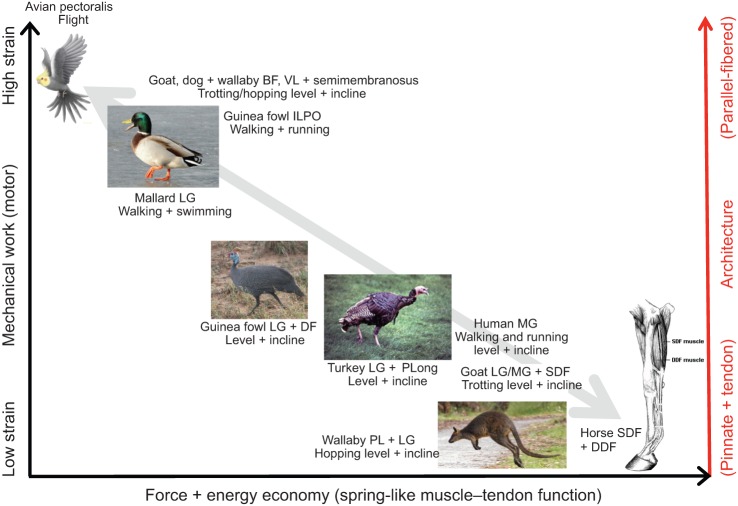Fig. 4.
Qualitative comparison of muscle work in relation to force and energy economy and muscle–tendon architecture based on in vivo results obtained from a variety of animal muscles and locomotor conditions. In general, an inverse relationship exists for muscle work relative to force and energy economy, with long parallel-fibered muscles favoring greater work and shorter pinnate-fibered muscles favoring spring-like muscle–tendon function and low cost of force generation. Results for horse distal limb muscles are inferred from muscle–tendon architecture in relation to joint mechanics (Biewener, 1998b; McGuigan and Wilson, 2003). Other data are drawn from the following sources: wallaby plantaris (PL) and lateral gastrocnemius (LG) (Biewener et al., 1998b, 2004); goat LG, medial gastrocnemius (MG), and superficial digital flexor (SDF) (McGuigan et al., 2009); turkey LG and peroneus longus (PLong) (Gabaldón et al., 2004; Roberts et al., 1997); guinea fowl LG and digital flexor IV (DF-IV) (Daley and Biewener, 2003); mallard LG (Biewener and Corning, 2001); goat biceps femoris (BF) and vastus lateralis (VL) (Gillis et al., 2005); dog VL and semimembranosus (Gregersen et al., 1998); wallaby BF and VL (McGowan et al., 2007); and cockatiel pectoralis (Hedrick et al., 2003).

